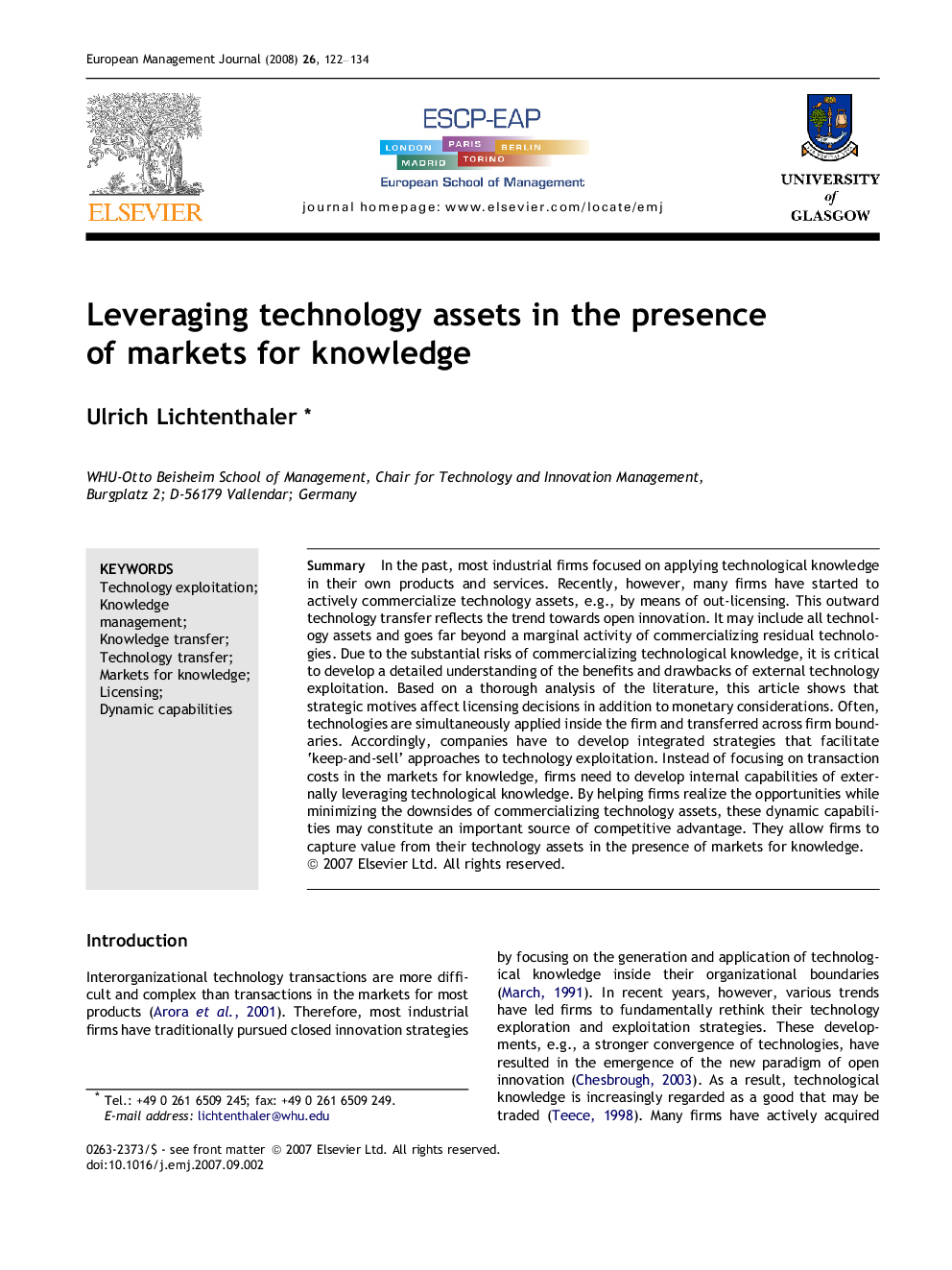| Article ID | Journal | Published Year | Pages | File Type |
|---|---|---|---|---|
| 1015325 | European Management Journal | 2008 | 13 Pages |
Abstract
In the past, most industrial firms focused on applying technological knowledge in their own products and services. Recently, however, many firms have started to actively commercialize technology assets, e.g., by means of out-licensing. This outward technology transfer reflects the trend towards open innovation. It may include all technology assets and goes far beyond a marginal activity of commercializing residual technologies. Due to the substantial risks of commercializing technological knowledge, it is critical to develop a detailed understanding of the benefits and drawbacks of external technology exploitation. Based on a thorough analysis of the literature, this article shows that strategic motives affect licensing decisions in addition to monetary considerations. Often, technologies are simultaneously applied inside the firm and transferred across firm boundaries. Accordingly, companies have to develop integrated strategies that facilitate 'keep-and-sell' approaches to technology exploitation. Instead of focusing on transaction costs in the markets for knowledge, firms need to develop internal capabilities of externally leveraging technological knowledge. By helping firms realize the opportunities while minimizing the downsides of commercializing technology assets, these dynamic capabilities may constitute an important source of competitive advantage. They allow firms to capture value from their technology assets in the presence of markets for knowledge.
Related Topics
Social Sciences and Humanities
Business, Management and Accounting
Business and International Management
Authors
Ulrich Lichtenthaler,
